Books & Magazines:
Magazines:
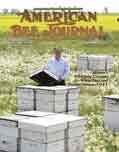
The American Bee Journal was established in 1861 by Samuel Wagner and has been published continuously since that time, except for a brief period during the Civil War. The Journal has the honor of being the oldest English language beekeeping publication in the world. Today, Dadant and Sons has the privilege of publishing the American Bee Journal for subscribers throughout the world. Readership is concentrated among hobby and commercial beekeepers, bee supply dealers, queen breeders, package-bee shippers, honey packers, and entomologists. http://www.americanbeejournal.com/

Bee Culture - The Magazine of American Beekeeping is designed for beginning, sideline, and commercial beekeepers who want the latest information on the world of honeybees and beekeeping.
http://www.beeculture.com/buzz/
Books:
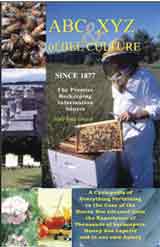
41st Edition of ABC XYZ of Bee Culture: An Encyclopedia Pertaining to the Scientific and Practical Culture of Honey Bees
Author: A.I. Root, Author/Editors: Dr. H. Shimanuki USDA Bee Lab Research Leader, retired and Kim Flottum, Editor Bee Culture Magazine and Ann Harman, world travelling beekeeper and author and regular contributor to Bee Culture Magazine.
Since 1877 The Premiere Beekeeping Information Source. An encyclopedia of everything pertaining to the care of the honey bee gleaned from the experience of thousands of beekeepers, honey bee experts, and in our own apiary. In this 41st edition is a wealth of practical information that's been completely updated on the fundamentals of honey bee biology, anatomy, physiology, behavior, and all the rest. Over 1,000 pages, over 1,000 photos.
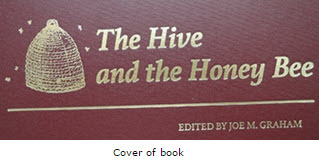
The Hive and the Honey Bee
By Dadant Publications (Pub. 2015)
New Edition! - A Complete Beekeeping Library in One Book
29 Chapters, 44 Authors & 1057 pages (larger page format - 7 x 10 inches)
27% More Information than the 1992 edition
Beautiful color photos used throughout the book
660 photos and 151 drawings, graphs & tables
Professionally Indexed for easy Information Searches
The newly published edition of The Hive and the Honey Bee edited by American Bee Journal editor Joe Graham, is now a reality. This is the bible of the beekeeping world, and rightfully so. It was first published in 1853--which, by the way, happens to be the same year that the European honey bee arrived in California. Apiarist, minister, and teacher L. L. Langstroth (1810-1895), “The Father of American Beekeeping,” wrote the first edition, then called Langstroth on the Hive and the Honey Bee.
The Hive and the Honey Bee, last updated in 1992, is a massive effort. Published by Dadant, the 1057-page book is the work of dozens of national and international icons in beekeeping science and the beekeeping industry. The book traces the global history of beekeeping to modern day apiculture and spotlights the progress, problems and achievements along the way. European colonists brought the honey bee to America (Jamestown colony) in 1622. The Hive and the Honey Bee is an excellent book for novice or professional beekeepers.
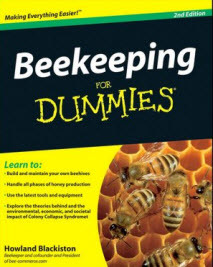
Beekeeping for Dummies
By: Howland Blackiston (Pub. 2009)
A great beginner-friendly book for anyone interested in raising honey bees. Learn about the honey bees: their anatomy, how they communicate, social structure, and the value they bring to our lives. Full color photos and step by step instructions on starting your own beehive, tips from experts on maintaining a healthy colony, the latest on honey bee medication and treatments, harvesting and marketing your honey, and the impact the disappearance of the honey bee has on our environment and economy.

The Backyard Beekeeper: An Absolute Beginner's Guide to Keeping Bees in Your Own Back Yard and Garden
By Kim Flottum (Editor of Bee Culture magazine) (Pub. 2010)
Revised and updated, makes the time-honored and complex tradition of beekeeping an enjoyable and accessible backyard pastime. This expanded edition provides more information on beekeeping with sustainable practices, pesticide-resistant bees, and urban and suburban beekeeping. This complete honey bee resource contains general information on bees; a how-to guide to the art of bee keeping and how to set up, care for, and harvest honey from your own colonies; as well as tons of bee-related facts and projects. You'll learn the best place to locate your new bee colonies for their safety and yours, and you'll study the best organic and nontoxic ways to care for your bees, from providing fresh water and protection from the elements to keeping them healthy, happy, and productive.
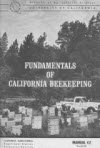
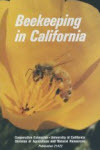
Beekeeping in California & Fundamentals of California Beekeeping
(Published forever and a day ago but still relevant)
These two older books are excellent resources for the California beekeeper. Both are out of print but you can read them and downloaded a pdf here thanks to the Mount Diablo Beekeepers Association.
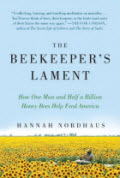
The Beekeeper's Lament: How One Man and a Half a Billion Honey Bees Help Feed America
By Hannah Nordhaus (Pub. 2011)
The Beekeeper's Lament is a peek at the issues faced by commercial beekeepers in this country. The book is a non-fiction portrait of an unusual fourth-generation beekeeper, John Miller, who travels the West with 10,000 beehives, making money, pollinating crops, and struggling to keep his bees alive in the middle of a strange and sobering honey bee die off.
Storey's Guide to Keeping Honey Bees
Originally titled Beekeeping: A Practical Guide and Hive Management a Seasonal Guide for Beekeepers by Richard E. Bonney, these classic books are now updated by Dr. Malcolm T. Sanford, Professor Emeritus, University of Florida.
This volume provides the latest information on honey bee diseases. It also includes quotes by beekeepers in the field with respect to their solutions to contemporary challenges.
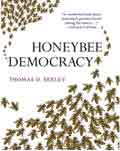
Honeybee Democracy
By Thomas D. Seeley, Professor of Biology (Cornell University) (Pub. 2010)
"A wonderful book about humanity's greatest friend among the insects..." Edward O. Wilson
"From bees to brains, Seeley takes us on a remarkable scientific journey of discovery. Through a landmark series of studies, he explores how honeybee swarms decide where to relocate, and from this fascinating tale of life or death, he gives us deep insights into how social systems can make good choices without global information or direct leadership. This book is a masterpiece of intense investigation, careful thought, clear writing, and love for one's subject." John Miller, Carnegie Mellon University & the Santa Fe Institute.

Honey Bee Colony Health: Challenges and Sustainable Solutions
By: Diana Sammataro & Jay A. Yoder (Pub. 2011)
This book summarizes the current progress of bee researchers who are investigating the status of honey bees, and possible reasons for their decline and provides a basis for establishing management methods that maintain colony health.
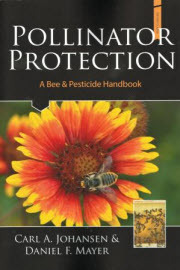
Pollinator Protection: A Bee & Pesticide Handbook
By: Carl A. Johansen; Daniel F. Mayer
Back by popular demand, Pollinator Protection: A Bee & Pesticide Handbook is a summary of extensive laboratory research and field testing of insecticides and other pesticides on honey bees and other bee pollinators. The authors review miticides and other chemicals used by beekeepers, as well as those commonly used in the agricultural industry. This is a faithful reprint and, though the chemicals used may have changed since its original publication in 1990, the lessons and protection techniques described herein are well applied to current practices. Go to http://www.wicwas.com/books and scroll down the page to find this title.
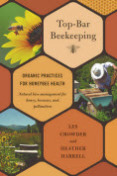
Top-Bar Beekeeping , Organic Practices for Honeybee Health
By: Les Crowder and Heather Harrell. (Pub. 2012)
Top-Bar Beekeeping is a guide to help people interested in natural or treatment free beekeeping to build a topbar hive, fill it with bees, and manage the hive to produce honey, beeswax, pollination and joyful respect for honeybees.
“As beekeepers, we are intimately tied to our environment and the symptoms of its degradation. Without pollinators, our current population cannot survive and, similarly, without our support and protection, pollinators cannot survive.” — from Topbar Beekeeping
For reviews by Thomas D. Seeley (Professor of Biology at Cornell Univ.) and others, to find out more about "Top-Bar Beekeeping" and to purchase a copy, visit the authors' website at: http://www.fortheloveofbees.com/
The Secret Life of Bees
By Sue Monk Kidd (Pub. 2003)
The multi-million bestselling novel about a young girl's journey towards healing and the transforming power of love, from the award-winning author of The Invention of Wings.
https://en.wikipedia.org/wiki/The_Secret_Life_of_Bees_(novel)
https://www.amazon.com/Sue-Monk-Kidd/e/B000AQ1N14/ref=dp_byline_cont_pop_book_1

The Travelling Beehive
By Elena Garcia and Manuel Ángel Rosado Illustrated by Juan Hernaz (Pub. 2012)
The Travelling Beehive is a free stunningly beautiful illustrated book that examines in depth the importance of pollination for our current lifestyle.
Halfway between literature and popular science, deeply documented, this book offers a didactic view of the activity of the domestic bee and other pollinators, for children and for adults, beekeepers, biologists and entomologists.
You can read and download The Travelling Beehive for free (in PDF and also epub file for iPad and other tablets) directly from the following links:
EPUB files: (for iPad and tablets):
http://apolo.entomologica.es/cont/materiales/epub/ttb.epub
http://apolo.entomologica.es/cont/materiales/epub/ttbtg.epub (teacher's guide)
PDF files:
http://apolo.entomologica.es/cont/materiales/The%20travelling%20beehive.pdf http://apolo.entomologica.es/cont/materiales/The%20travelling%20beehive%20-%20teachers%20guide.pdf (teacher's guide)
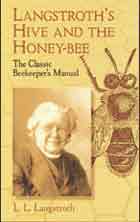
Langstroth's Hive and the Honey-Bee The Classic Beekeeper's Manual
By L. L. Langstroth (Pub. 1853)
Langstroth (1810-1885) was arguably the most influential American apiarist of the nineteenth century and his innovations in hive design are considered fundamental to the modern apicultural industry.
Langstroth's Hive and the Honey-Bee is the first descriptive treastise of modern bee management. In a reader-friendly enthusiastic style, Langstroth addresses every aspect of beekeeping: bee physiology; diseases and enemies of bees; the life-cycles of the queen, drone, and worker; bee-hives; the handling of bees; and many other topics.
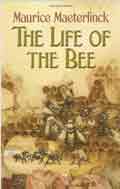
The Life of The Bee
By Maurice Maeterlinck (Pub. 1901)
When Maurice Maeterlink, with a poet's sensibility and sensitivity, turned his attention to a bee hive, his obervations turned into a masterpiece. In "The Life of the Bee," Maeterlinck illuminates the whole life and society of the bee, from the structure of the hive, to the movement and meaning of the swarm, to the role and activity of the queen. "The Life of the Bee" is for all readers curious about a brilliant thinker's mediation on a force of nature that, ultimately, holds lessons about the human race and our universe. Maurice Maeterlinck (1862-1949) won the Nobel Prize in literature in 1911.
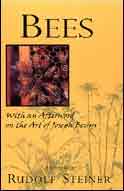
Bees (8 Lectures)
By Rudolf Steiner (Pub. 1923)
In these talks Rudolf Steiner describes in fascinating details the unconscious wisdom of the beehive, and how this relates to our human experience. From physical descriptions of the everyday activities of the beehive, to the loftiest esoteric insights, these lectures focus on the importance of bees to human health, human culture and the cosmos.
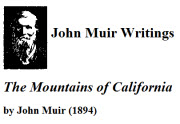
Th Bee-Pastures (Ch. 16) The Mountains of California
By John Muir (1894)
Founder of the Sierra Club, John Muri's direct activism helped save the Yosemite Valley. Enjoy the beauty of the flora and fauna and honeybees of California through the words of John Muir. http://www.yosemite.ca.us/john_muir_writings/the_mountains_of_california/chapter_16.htm
For additional reading: The Everett F. Phillips' Beekeeping Collection at Cornell's Albert R. Mann Library is one of the largest and most complete libraries in the world. https://digital.library.cornell.edu/collections/bees







